Picture your garden as a soggy, bug-filled mess, buzzing with unwanted pests. You’re probably wondering why this keeps happening, right? Overwatering, poor soil, and messy habits might be the culprits, creating a pest paradise. Let’s break it down, starting with simple fixes like checking soil moisture—aim for 1-2 inches deep before watering. Stick around to uncover more tips and transform your garden into a pest-free zone.
Contents
Overwatering Attracts Pests
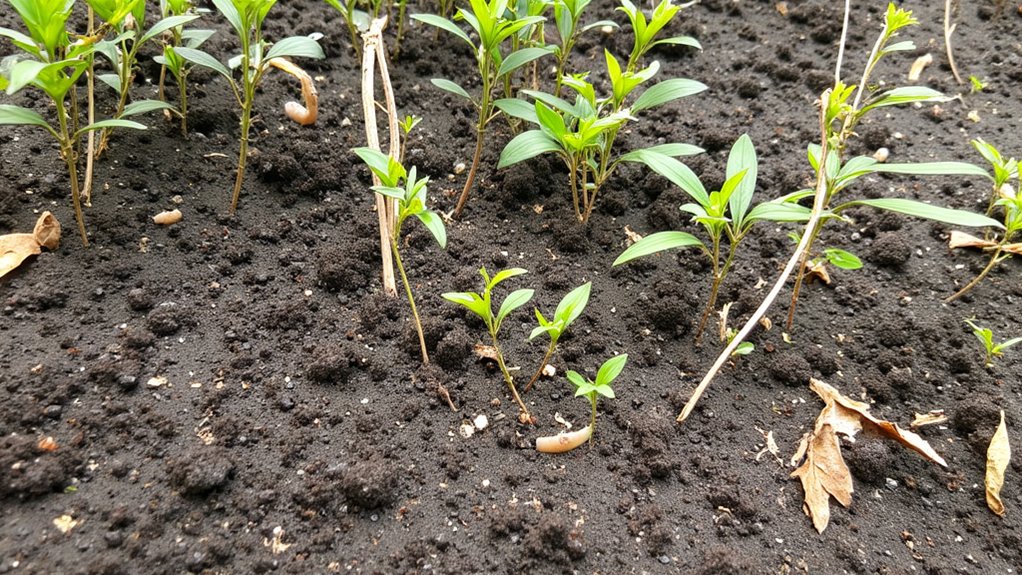
Although it might seem like a good idea to give your plants extra water, overwatering can actually invite a host of pesky garden invaders. You’re creating a soggy paradise for pests like fungus gnats and slugs. Wet soil, especially if it stays damp for over 24 hours, becomes a breeding ground.
Poor Soil Quality

While you might think soil is just dirt, poor soil quality can seriously mess up your garden’s defenses against pests. Weak soil means weak plants, and pests love targeting those easy snacks. If your soil lacks nutrients, your plants can’t build strong roots or leaves to fight off bugs.
So, test your soil’s pH and nutrient levels with a simple kit from a garden store. Aim for a pH between 6.0 and 7.0, ideal for most veggies. If it’s off, add lime to raise pH or sulfur to lower it, following package directions.
Also, mix in compost—about 2 inches deep—every spring to boost fertility. Healthy soil grows tough plants, and that’s your best shield against infestations. Keep at it!
Lack of Crop Rotation

If you’re planting the same crops in the same spot year after year, you’re practically inviting pests to settle in. Pests and diseases love familiarity, and they’ll build up in the soil, waiting for their favorite snack.
Here’s the fix: rotate your crops annually. Switch up plant families—like moving tomatoes to a new bed after growing beans there—to disrupt pest cycles. This way, you’re starving out bugs that target specific plants.
Plan a three-year rotation cycle, at minimum, for best results. Map out your garden beds, noting what grew where, and shift crops to fresh spots each spring. It’s a simple trick, but it works wonders. Keep those pests guessing, and you’ll see fewer infestations taking hold.
Neglecting Garden Cleanup
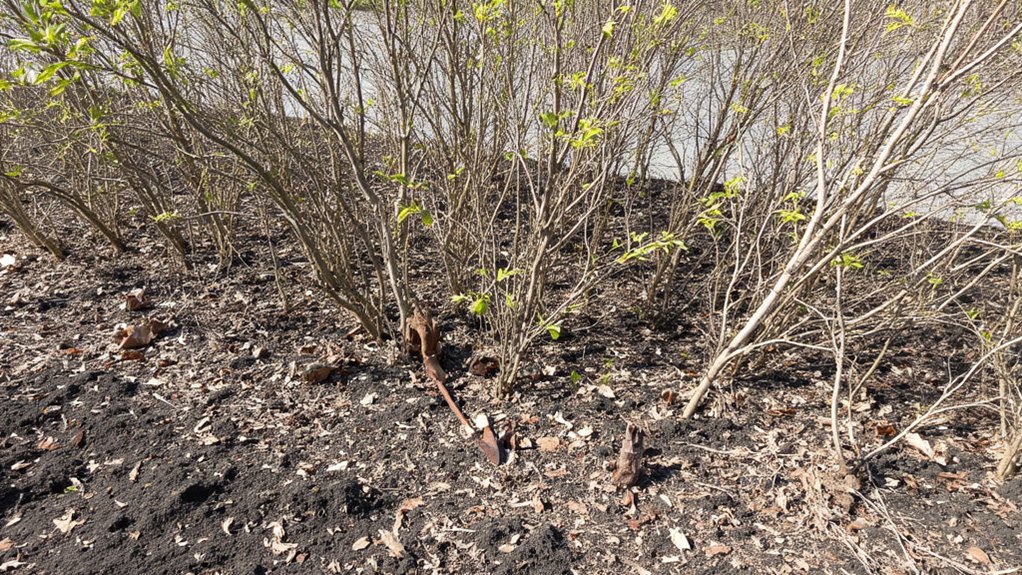
Hey, let’s talk about neglecting garden cleanup, a sneaky habit that can wreck your pest control efforts. You might not notice it, but leftover debris, like fallen leaves or dead plants, turns into a cozy hideout for pests. Clear it out, pronto!
Start by raking up leaves and clippings every week, especially in fall when they pile up fast. Toss them in a compost bin at least 10 feet from your garden, or bag them for disposal. Don’t let them sit there, inviting bugs like aphids or slugs.
Next, pull out dead plants after harvest, roots and all, within 24 hours if possible. Dispose of them far away. This cuts down pest breeding spots, keeping your garden safer. Stick with it!
Monoculture Planting Risks
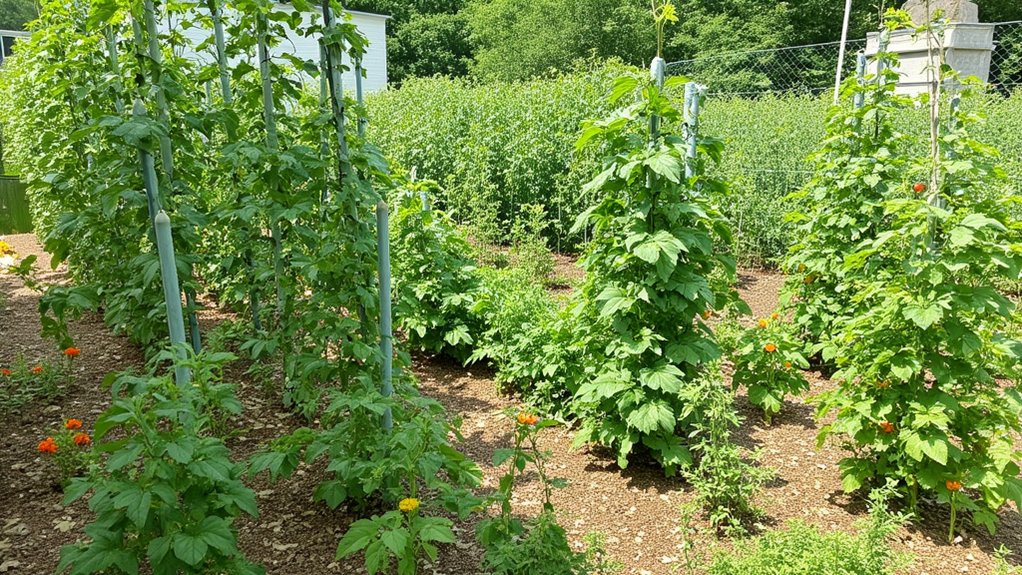
Before you plant the same crop everywhere, let’s explore the risks of monoculture planting. When you grow just one type of plant, like rows of only tomatoes across your 20×20 foot garden, you’re creating a buffet for pests. Specific bugs target specific crops, and they’ll swarm in fast.
Here’s the deal: diversify to protect your space. Mix in different plants, like marigolds or beans, within that same 20-square-foot area, to confuse pests and disrupt their breeding cycles. Rotate crops yearly—don’t plant tomatoes in the same spot next season. This breaks pest life cycles, often within 6-12 months.
Think smart, not repetitive. By varying your garden layout, you’ll cut down infestation risks considerably without extra effort. Keep it mixed, and watch issues shrink.
Insufficient Natural Predators

While you’re mixing up your garden to dodge pests, don’t overlook the power of natural predators. These helpful critters, like ladybugs and lacewings, can gobble up aphids and other nuisances fast. Without them, you’re stuck battling infestations solo, and that’s no fun.
So, attract these allies by planting nectar-rich flowers, such as marigolds or alyssum, near your veggies. Set up small water sources, like a shallow dish with pebbles, refilled every 2-3 days, to keep them hydrated. Also, avoid broad-spectrum pesticides; they’ll wipe out the good bugs, too.
Lastly, consider buying predatory insects online if local populations are low. Release 1,000 ladybugs per 1,000 square feet at dusk, ensuring they settle in. You’ve got this!
Improper Plant Spacing

Let’s shift gears and talk about improper plant spacing, another sneaky cause of garden infestations. You might not realize it, but cramming plants too close together creates a bug paradise. Overcrowding blocks airflow, traps moisture, and lets pests hop easily from one plant to another.
So, check your spacing guidelines for each crop—tomatoes, for instance, need 18-24 inches apart. When planting, measure carefully with a ruler or string to keep distances consistent. This simple step reduces humidity, cutting down pest hideouts.
Also, thin out seedlings early, ideally within two weeks of sprouting, to avoid competition. Don’t let greed for more plants mess up your garden. Proper spacing isn’t just neat—it’s a solid defense against infestations waiting to strike.
Using Chemical Pesticides Excessively
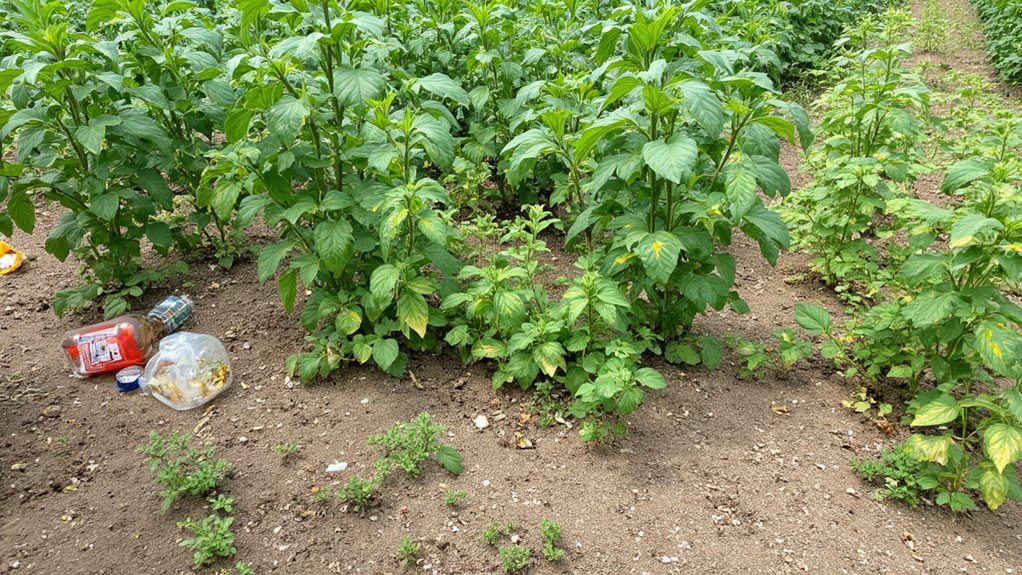
As we plunge into the next issue, consider how overusing chemical pesticides can backfire on your garden. You might think dousing plants with chemicals solves everything, but it often creates bigger problems. Excessive use, like spraying more than the recommended 1-2 times per week, can harm your soil’s health. It kills off essential microorganisms, disrupting the natural balance.
Ignoring Beneficial Insects

Before you grab that pesticide spray again, think about the beneficial insects in your garden. Ladybugs, lacewings, and parasitic wasps aren’t just pretty; they’re your natural pest control team, munching on aphids and caterpillars. Ignore them, and you’re tossing out free help.
When you spray chemicals, you often kill these allies, leaving your garden defenseless. Instead, identify beneficial insects—check for ladybugs with their red, spotted backs, or lacewings with delicate, green wings. Research their habits online, and avoid spraying during their active hours, usually early morning or late evening.
Create a welcoming spot for them, too. Plant nectar-rich flowers like marigolds or dill near your veggies. Leave a small, 2-square-foot patch of bare soil for ground-nesting beneficials to settle in.
Unchecked Weed Growth
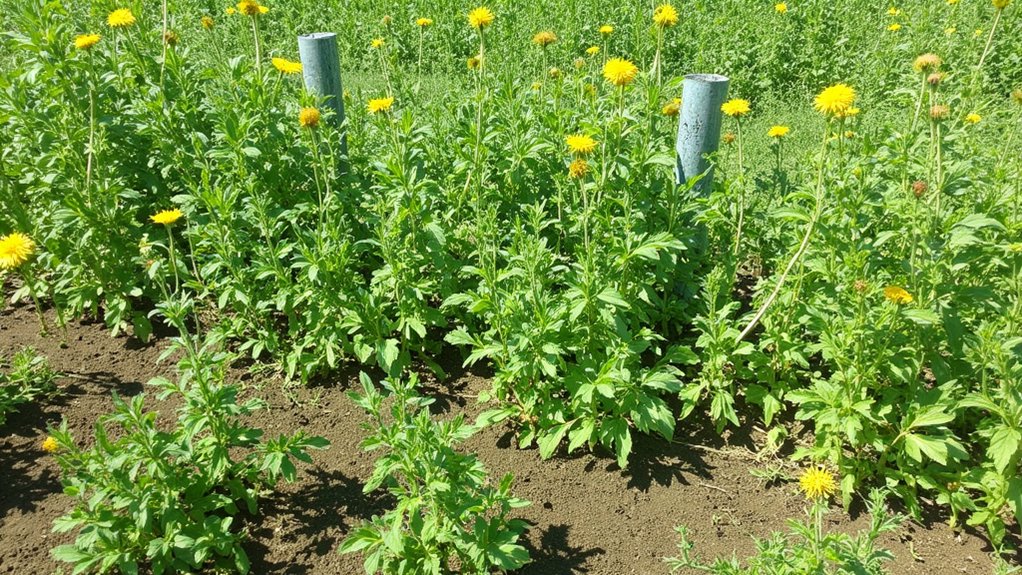
While you’re tending to beneficial insects, don’t overlook the sneaky threat of unchecked weed growth in your garden. Weeds aren’t just unsightly; they’re pest magnets, stealing nutrients and water from your plants. They create cozy hideouts for bugs like aphids and slugs, worsening infestations.
So, tackle them head-on with a plan. Pull weeds weekly, especially after rain when soil’s soft, focusing on a 2-foot radius around plants. Use a hand trowel for stubborn roots, ensuring you remove the entire weed. If they’re spreading fast, apply a 2-inch layer of mulch to smother seeds.
Don’t wait for weeds to take over. Check your garden every 3-4 days, targeting young shoots before they seed. Stay consistent, and you’ll keep pests at bay.
